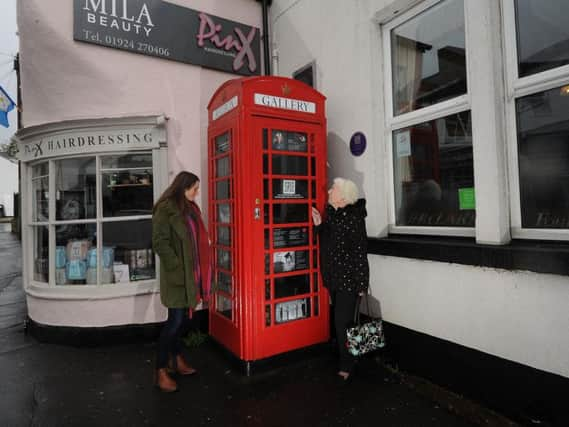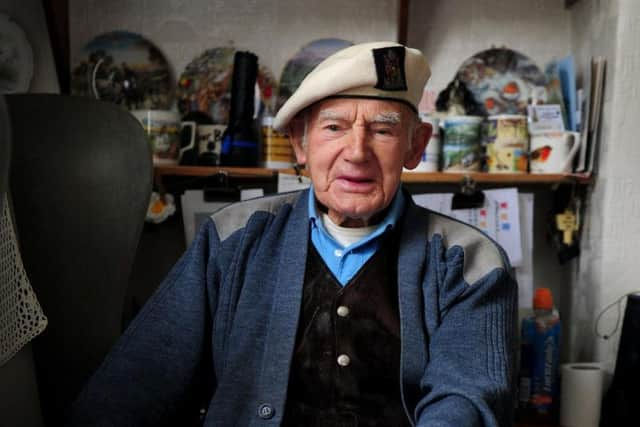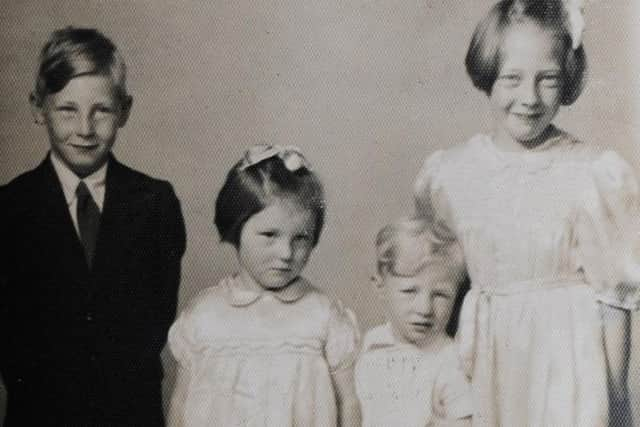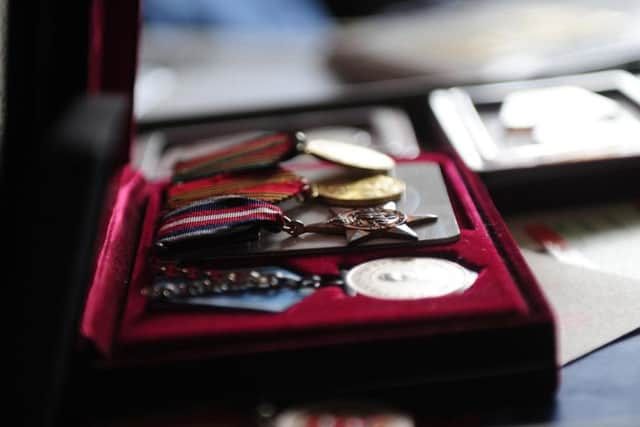Merchant Navy veteran recalls ship being struck by bombs in a Second World War exhibition launched inside a red Yorkshire phonebox


With a knock on the door in 1942, Jean Howarth gained a temporary sister and a lifelong friend. Her mother, Ada Lockwood, answered the unexpected call to be greeted by a billeting officer stood in front of the house with two young children.
“She said to my mum ‘I’m looking for someone to take these evacuees in, I’ve just these two,” Jean, now 84, recalls. “My mum said well I’ve already got three children of my own. It was after tea and the lady said it’s getting late, I’m getting desperate now, so would you take the little girl overnight and then we’ll sort something out. [The girl] never left us.”
Advertisement
Hide AdAdvertisement
Hide AdHer name was Jean Irene Giles, she was four-years-old and she had left Bermondsey in London to escape the Blitz during the Second World War. “The thing that stuck in my mind is they called her Jean as well. So we called her Irene and I still do now...She was just like a sister to us. All the family accepted her and we just treated her as one of us.


“She didn’t come at the beginning of the war because her mum wouldn’t entertain her being evacuated. It was only later on when the bombing got really, really intense that her mum decided that for her safety, it was better that she came. But she’d no idea where she was going. They just got put on the train in London and her mum had no idea where she’d end up.”
Online map plots location of every air raid on Britain during Second World WarIrene remained with the family in Horbury, Wakefield for four years, becoming close to Jean and her brothers John and Morris. Each Christmas, Jean’s grandfather would make a giant cracker with presents for all the grandchildren inside.
“The first Christmas, there was a gift of a skipping rope with wooden handles made by grandad for Irene included. She could never understand how Santa knew she had been evacuated to Yorkshire.”
Advertisement
Hide AdAdvertisement
Hide AdJean recalls her early memories of Irene with a smile. The young girl that turned up on her family’s doorstep became a huge part of her childhood and the pair still talk more than 70 years on. “I think these memories should be shared,” she says.


“These stories shouldn’t be forgotten. At our age, even our own families, they don’t treasure what we treasure. The actual contact with people who can remember the war is getting shorter and shorter because the people are getting less and less.”
Jean has shared her recollections as part of a heritage project to mark the 80th anniversary of the start of the war. Artists from Wakefield-based creative charity One to One Development Trust have led the scheme, creating an exhibition entitled Horbury Remembers 80 Years in the town’s Redbox gallery, a decommissioned phone box that was transformed into a miniature art gallery last year.
From romance to heroic war efforts, the exhibition, which is also accompanied by an online digital installation, pays tribute to the role of Horbury and its people during the war and recognises local stories.
Advertisement
Hide AdAdvertisement
Hide Ad“We classed ourselves lucky that there weren’t many bombs here,” Jean recalls. “There was one at Lupset and that was the nearest to us. It’s difficult explaining to young people what life was like.” It was frightening for Jean when she realised how close the bombers had struck. “It was always at the back of your mind that a bomb could be dropped anywhere...You were frightened all the time even though it wasn’t like London.”


D-Day 75 years on: Yorkshire remembersThe family were given an air raid shelter to install in the garden of their home when the war broke out. “Some people stood them up and erected them but my dad dug a big hole out so a lot of it was in the earth - he thought it would be safer.”
With fears of a poisonous gas attack, some 40 million gas masks were issued to British families. “You had to carry it to school with you,” Jean says. “I can remember at the beginning of the wartime, we had to go in this shelter and we sat in rows and they turned the gas on. They peered at you to see if the gas mask worked.
“If your eyes started watering that meant the gas was getting inside the mask. You knew you had to do it in case the gas came...I didn’t like it but you were only in minutes just to test them.”
Advertisement
Hide AdAdvertisement
Hide AdAt home, money was scarce. To support the four children, Ada only had what Jean’s father Harry sent home from the war. A self-employed master-plasterer, he served with the Royal Engineers in Italy, involved in the driving and maintenance of trucks.
He was one of many from the town, that served in the forces. Like 98-year-old John Hirst, who has also shared his experiences as part of the Horbury Remembers project, he survived to return home. John joined the Merchant Navy at the age of 20 and remained in service for six years, travelling aboard eight different ships. His maiden voyage was a troubled one.
In January 1942, he signed onto the SS Empire Cowper, a cargo ship bound for Russia. The conditions it faced were harsh. Like many of the ships that travelled in the seas around northern Norway, delivering war suppliers from the Western Allies to the Soviet Union after it was invaded by Nazi Germany, it contended with extreme weather and enemy attacks.
Returning to the UK from Murmansk in April 1942, the ship was struck by three bombs. One burst the boiler just seconds after John had finished making a kettle of tea. The lights went out and he struggled to see anything but steam.
Advertisement
Hide AdAdvertisement
Hide Ad“As I put [the kettle] down, there was such a thump,” he recalls. “The first thing that happens aboard a ship in disaster is all the electrics go off and it’s dark. You have emergency lighting, little paraffin lamps. I had the honour of being lampie, keeping them filled with oil and free for working.”
With orders to abandon the soon-to-be-sunken ship, John helped to launch a lifeboat and jolly boat to help his crewmates escape, before fleeing himself on a life raft. “You hadn’t time to think,” he says. “You were on duty.”
What long-lost Second World War letters reveal about life at home for Yorkshire womenThey were picked up by a rescue ship, the first leg of a long journey back home for John, who later returned to sea after recovering from the ordeal. “I was home for quite a while. I’d travelled home with just Russian clothes. My father said where’s your kit?...Why didn’t you go back for it? If I’d have gone back for it, I wouldn’t have been here.”
For Amy Charles, of One to One Development Trust, it has been deeply moving to learn of the stories of the generations before her. “I have my own silly worries about life and then I meet John and he tells me a first hand account of how he escaped from a sinking warship after it was bombed and it just puts things into perspective.,” she says.
Advertisement
Hide AdAdvertisement
Hide Ad“Not many people get to meet a local hero, I feel really grateful.Eventually these stories won’t be around so it’s important we hear them and document them for future generations. To be able to bring them to life is like a legacy.”
Horbury Remembers 80 Years has been supported by the Arts Council, The Rotary Club of Horbury and Ossett Phoenix and Horbury Civic Society. It is on display in the Redbox Gallery on Queen Street, Horbury, until December 13. Using a phone or tablet, visitors can scan a QR code to reveal a digital interpretation of the project. This is also available on the charity’s website. Visit onetoonedevelopment.org